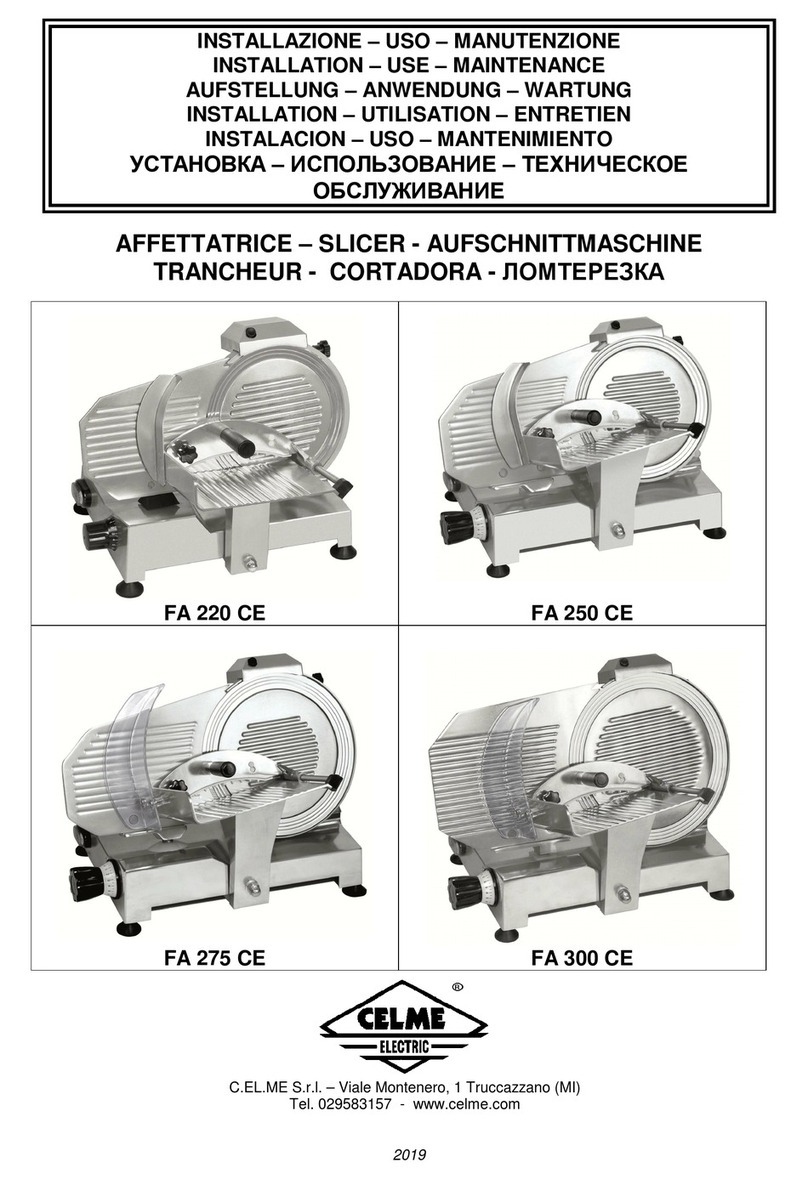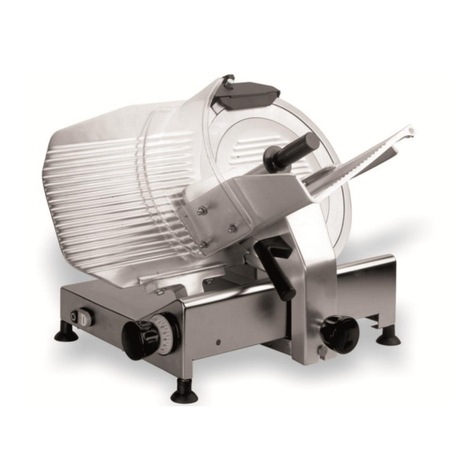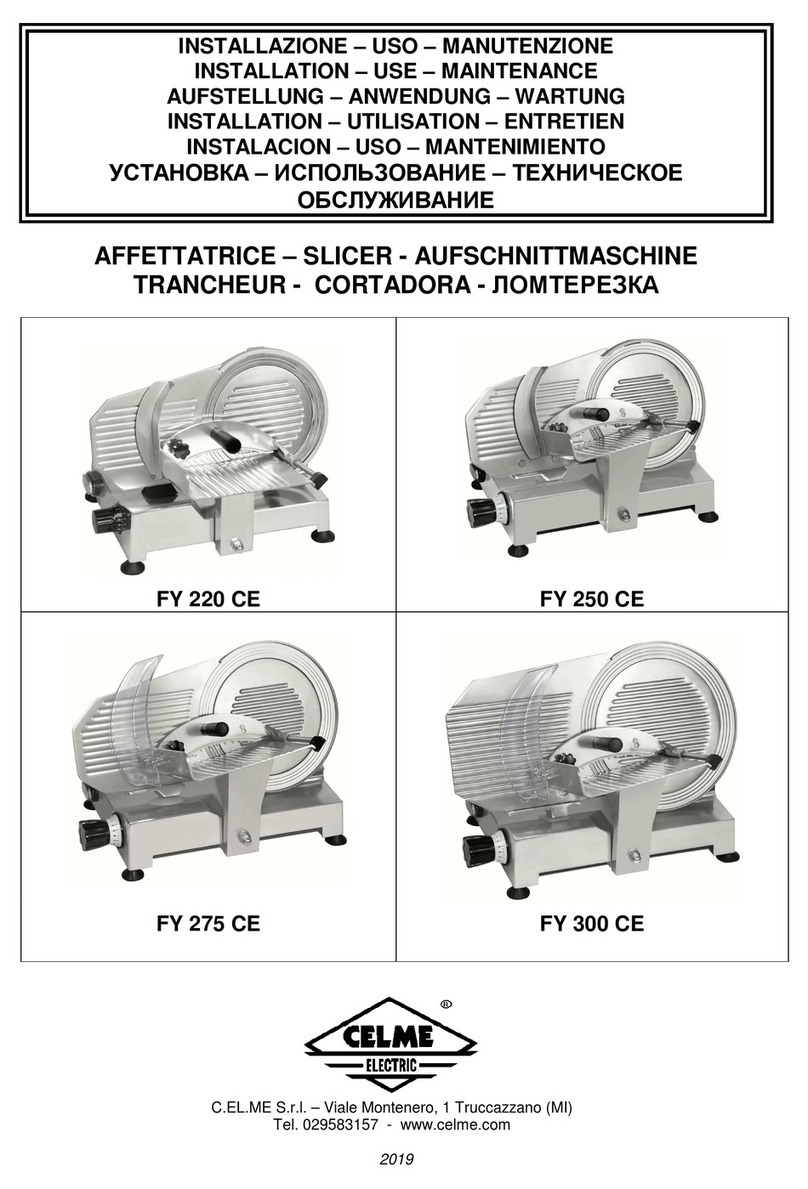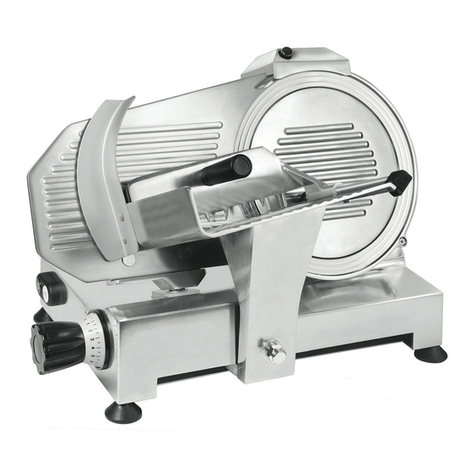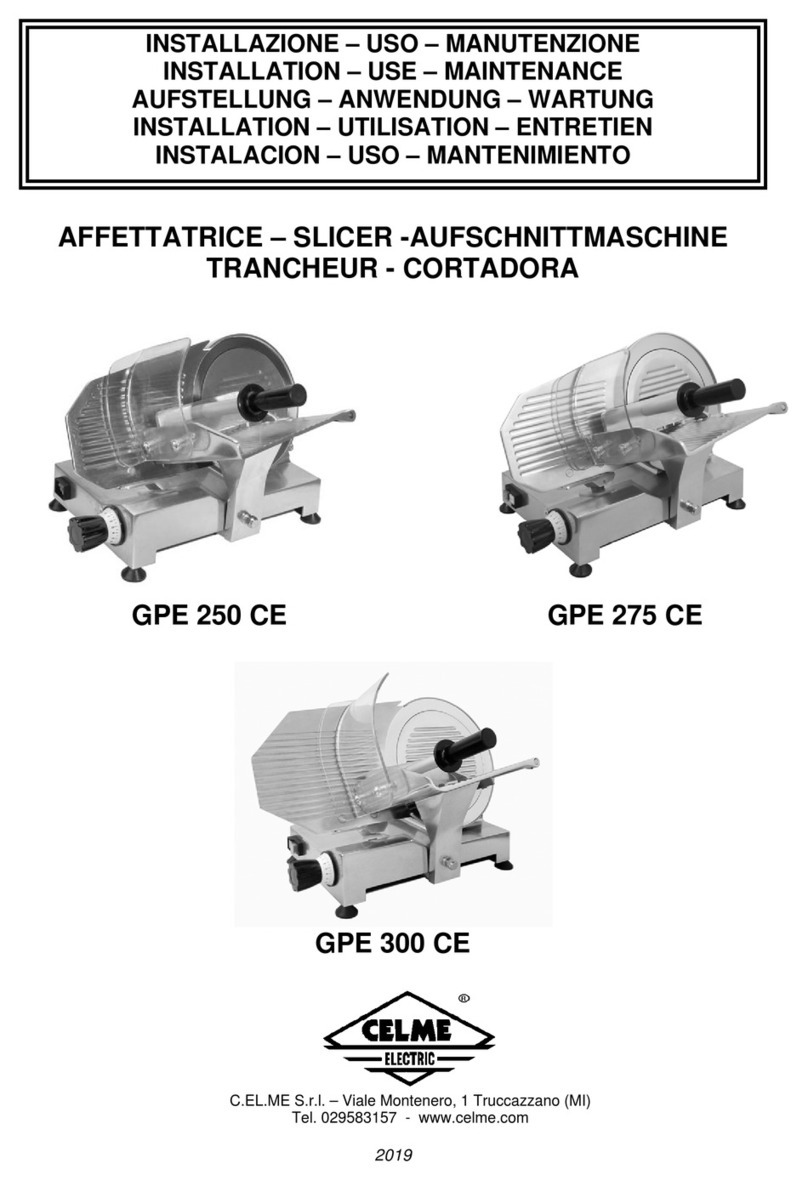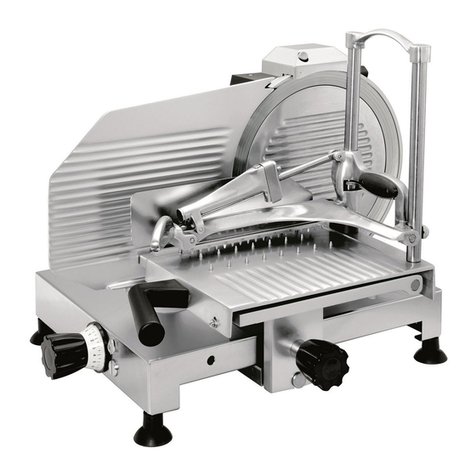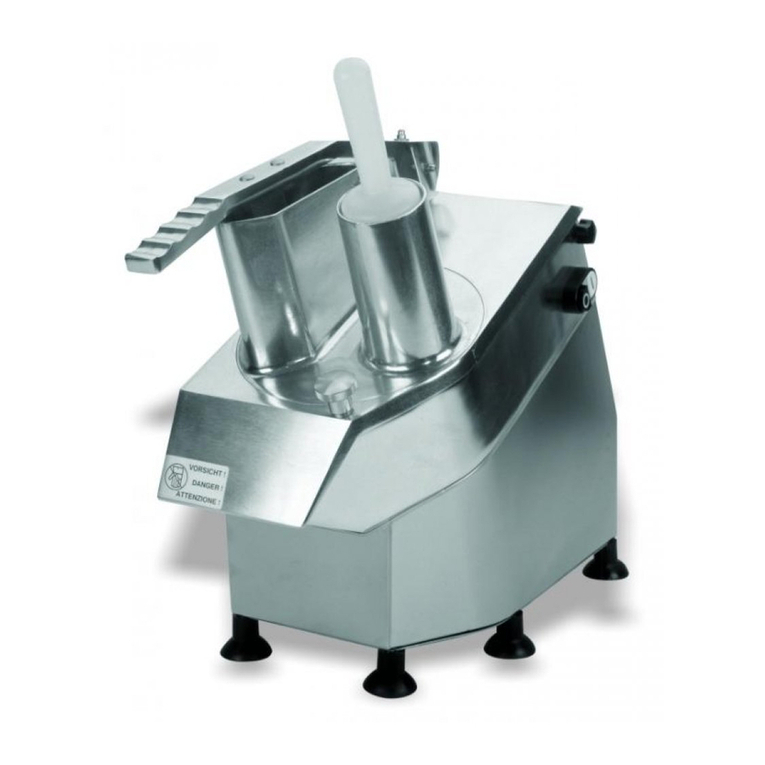
6) AFFILATURA E LUBRIFICAZIONE
6.1 AFFILATURA
L’affilatura e’ un’operazione molto importante nell’utilizzo dell’affettatrice.
Si deve effettuare ogni volta che il taglio non risulta netto e la fetta tende ad essere trascinata dalla lama.
La periodicita’ di questa operazione dipende dall’uso e dal tipo di prodotti che vengono affettati.
Prima di procedere all’affilatura e’ necessario una buona pulizia di tutta la macchina ed una buona
sgrassatura della lama.
6.1.1 AFFILATURA CON AFFILATOIO DA APPLICARE (TOP 220-250-275-275XXL)
1. Inserire la spina di corrente
2. Azionare la manopola numerata ed impostare lo spessore massimo 15 mm. Applicare l’affilatoio nel foro
sul piatto ed avvitare il pomolo per fissarlo come in Fig.16
3. Premere il pulsante “A” ed avvicinare lo smeriglio fino a farlo sormontare alla lama, poi rilasciare il
pulsante. Fig.17
4. Accendere la macchina.
5. Tenendo in posizione il piatto assicurarsi che lo smeriglio “A” giri insieme alla lama per 5-10 secondi per
effettuare la smerigliatura. Fig.17
6. Premere il pulsante dello smeriglio “B” e far ruotare entrambi gli smerigli insieme alla lama per qualche
secondo in modo da togliere l’ eventuale bava. Fig.18
7. Lasciare il pulsante “B” ed allontanare il piatto e l’affilatoio dalla lama. Spegnere la macchina. Togliere
l’affilatoio dal carrello.
6.1.2 AFFILATURA CON AFFILATOIO FISSO (TOP 300)
1. Inserire la spina di corrente
2. Svitare il pomolo “E” a fianco dell’affilatoio. Fig.19
3. Sollevare l’affilatoio e ruotatelo di 180° in modo che la lama stia fra i due smerigli. Fig.20-21
4. Riavvitare il pomolo in modo che l’affilatoio sia bel fissato in posizione corretta per iniziare l’affilatura.
5. Premere il pulsante “A” per 5-10 secondi per effettuare la smerigliatura. Fig.22
6. Premere il pulsante “B” per qualche secondo per togliere l’eventuale bava. Fig.22
7. Spegnere la macchina e riportare l’affilatoio in posizione iniziale.
ATTENZIONE: Lo smeriglio “A” esegue l’affilatura, lo smeriglio “B” toglie unicamente la bava sul filo di
taglio. Durante l’operazione di affilatura e’ necessario mantenere il disegno originale dell’unghia della lama.
Quando la distanza fra l’anello e la lama supera i 6 mm e’ necessario sostituire la lama
6.2 LUBRIFICAZIONE DEL PRESSAMERCE
E’ importante lubrificare le parti scorrevoli del pressamerce con olio di vaselina bianco dopo ogni
lavaggio
Non utilizzare mai olio di semi o di oliva si rischia di compromettere tutto il funzionamento del
carrello dell’affettatrice. Fig.7
6.3PROLUNGATA INTERRUZIONE D' USO DELLA MACCHINA.
Dovendo lasciare inattivo l' apparecchio è necessario disinserire l' interruttore generale a muro ed effettuare
una pulizia completa di tutta la macchina ed i vari accessori.
E' consigliabile proteggere tutte le parti della macchina con olio di vaselina bianco oppure con prodotti idonei
in commercio. è consigliabile poi proteggere la macchina da polvere con telo di nylon o altro materiale.
